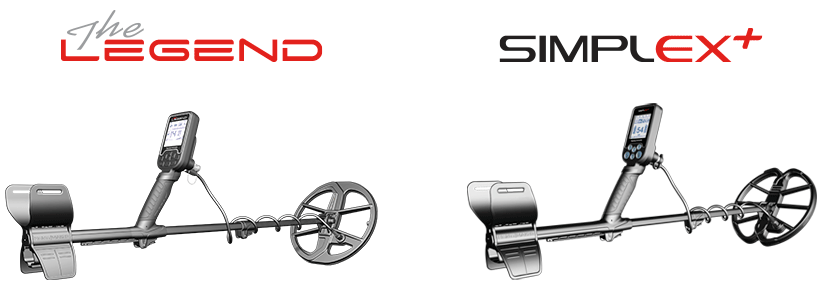Find's Treasure Forums
Welcome to Find's Treasure Forums, Guests!
You are viewing this forums as a guest which limits you to read only status.
Only registered members may post stories, questions, classifieds, reply to other posts, contact other members using built in messaging and use many other features found on these forums.
Why not register and join us today? It's free! (We don't share your email addresses with anyone.) We keep email addresses of our users to protect them and others from bad people posting things they shouldn't.
Click here to register!
Need Support Help?
Cannot log in?, click here to have new password emailed to you
You are using an out of date browser. It may not display this or other websites correctly.
You should upgrade or use an alternative browser.
You should upgrade or use an alternative browser.
Can't wait for the new multi from Makro/Nokta
- Thread starter nugget71
- Start date
greenmeanie
Active member
I don't think you will see it anytime soon we are still waiting on the simplex.
But I am also eager to see what the multi will look like.
But I am also eager to see what the multi will look like.
Sven
Well-known member
But, there's lots of newcomers to the hobby who will be looking for an entry level detector with high expectations. The Simplex, I am sure would could be that detector.
What a great way to hook them on the Nokta/Makro brand......having them start with a Simplex. Who may just eventually upgrade to the latest, greatest detector to
be produced down the road by Nokta/Makro.
What a great way to hook them on the Nokta/Makro brand......having them start with a Simplex. Who may just eventually upgrade to the latest, greatest detector to
be produced down the road by Nokta/Makro.
Del, I disagree on that, and I feel they have made the better, even smarter move. Since late 2014 I have had a very strong interest in the Nokta, then Makro, detector offerings. They kind of caught my attention with the FORS Gold, but really captured my interests with the FORS CoRe. It's a longer and sort of interesting story of how I got started with a Nokta FORS CoRe that arrived on January 8th of 2015. One I will never forget, and one that is certainly a very lasting reminder of just how devoted the company [size=small](now companies)[/size] are when it comes to design and development, as well as customer service, in this particular industry.D&P-OR said:I wish they would have forgotten about the Simplex & concentrated on the Multi and put their efforts into getting it out.
They have produced exceptional performance models for both Coin Hunting as well as serious Relic Hunting in very dense iron contaminated sites. This can include the land-based Makro Racer and Racer 2, and the even better Relic Hunting Nokta FORS CoRe and FORS Relic devices. These two are, as you know, my favorite two models from Nokta-Makro of the very nasty ferrous contaminated sites I enjoy searching. Since those entries in 2015 and 2016, we have seen this manufacturer introduce the Nokta Impact, which is a selectable 3-frequency [size=small](Multi-Frequency)[/size] device in early 2017, followed by two series of waterproof units last year [size=small](that have some single-frequency choices to selectable-frequency models)[/size] with the Kruzer series then later the Anfibio series.
I have found all of these models to provide a very nice set of adjustment functions while not being over-burdened with an excess of 'fluff,' and their performance afield has been very competitive, and build quality also remarable. One important thing to note is that all of these, even after having retail prices reduced after they were discontinued or simply with newer model releases, have remained at a very bargain-price and still below most of the competitive market ... compared with competitor's mid to top-dollar offerings. One thing the company hasn't offered is a lower-priced or "entry-level" detector. Considering that, Nokta-Makro had to look at that bigger margin of the buying market and concentrate on offering two things with a new model at a lower competitive price range:
1.. The competitor's models range in price from $199 to $499 in that so-called "Budget" or "Entry Level" range. So they need to go up against their pricing.
2.. Performance, or lack of: Most of the competitor's models in that lower-cost range hare poorly designed. Many lack a good functional GB control. Too many of them have a delayed response, and some both a delayed response and sluggish recovery. Most also lack many 'functional' features and are, generally, poor performers.
Nokta-Makro is working on product development of the new Simplex to address all these above things they are going up against, and are working to counter the others by also producing a fully waterproof detector, too! With other models they have provided a very good 'standard' search oil and a reasonably good set of optional search coils as well. We'll have to see how they counter the others with coil picks for the Simplex. I certainly hope they have a 7" Concentric, and would actually prefer that as a 'standard' search coil.
For a long time we have had some manufacturer's offer a model or two with a 'multi-frequency' design, from the full-time or simultaneous design to operator selectable frequency types. To ME, both approaches in design have their strengths and weaknesses, and overall, having owned and used many of both designs, I definitely favor a Selectable Multi-Frequency over the Simultaneous Multi-Frequency offerings. I read a lot of comments made by forum posters that 'claim' a simultaneous design to be better or to provide improved depth or to be the best way to go for Beach Hunting and so on and so on. Maybe for that individual they have enjoyed good success somewhere with a 'multi' than they had with a single frequency , but many statements I have read just haven't proved to be all that accurate when doing in-the-field, side-by-side comparisons.
I think Nokta-Makro was wise to work on the Simplex, also, because to come out with a Simultaneous Multi Frequency to try and match what they are currently offering in the selectable models is not going to be easy. They have to match, and then better, a lot of the performance, and that will take time. Additionally, Nokta-Makro doesn't rush a model to market to try and catch up with another detector maker. Instead, they work on the engineering design, they get a good number of 'Test' sample products out for evaluation before they address any adjustments or corrections and make a final product release decision. No need to hurry a product to market un-prepared, as we have seen with a number of detector releases from "the other guys", go bad due to a rush-to-market.
It is a more major investment so I want to let them take their time to work out all the bugs and get it right before they bring out a simultaneous offering.
Just my thoughts,
Monte
SMF detectors are the most challenging to develop and bring to market. Carl Moreland of White's V3 fame, now a chief engineer at FTP, stated that a normal VLF detector might have around 10,000 lines of code, whereas a SMF detector has well over 100,000 lines of code. So not an easy project, and given this is Nokta's first rodeo in the SMF arena, it'll be interesting to see what they come up with. I wouldn't expect the 1.0 version to be a polished, well refined product to be honest. I hope it will be the cats meow, but time will tell. Nice thing is their detectors are user upgradable, as I suspect there will be a lot of firmware updates on their SMF when it's released.
When the Impact was under development, I spoke with Dilek and tried to impress upon her how important of a move it would be for them to bring out a new, lightweight SMF detector and at that time she said it was on the drawing board, but not a priority. I had the same conversation with her when they asked me to field test the Multi Kruzer. Then we saw the Equinox come to market, good, bad or indifferent, it was a disrupter in the detecting world, it really turned the detecting world upside down.
I wouldn't expect the Nokta SMF to be announced until next year (yes I know Dilek has alluded to it's development a few times). Detectival seems to be the new detecting announcement venue, and the next principal sponsor is Minelab, which I'm sure will be touting their new Vanquish (whatever that will be?), I'd expect to see Nokta take the reigns the year after, so we may be a few years out on the Nokta SMF IMHO.
When the Impact was under development, I spoke with Dilek and tried to impress upon her how important of a move it would be for them to bring out a new, lightweight SMF detector and at that time she said it was on the drawing board, but not a priority. I had the same conversation with her when they asked me to field test the Multi Kruzer. Then we saw the Equinox come to market, good, bad or indifferent, it was a disrupter in the detecting world, it really turned the detecting world upside down.
I wouldn't expect the Nokta SMF to be announced until next year (yes I know Dilek has alluded to it's development a few times). Detectival seems to be the new detecting announcement venue, and the next principal sponsor is Minelab, which I'm sure will be touting their new Vanquish (whatever that will be?), I'd expect to see Nokta take the reigns the year after, so we may be a few years out on the Nokta SMF IMHO.
Hope I don't get into trouble by asking this question. I'm looking for a good detector one that will well in saltwater and on saltwater beaches. I've been looking at an anfibio multi and the Nox 800 just not sure .... I do like a lot of tone's...I really don't look at the screen much I go by tones .its my discrimination per say.but salt water hunting and salty Beach honey is what im looking to do....any help guys..
[attachment 368234 008.JPG]greetings to all
I am also waiting for the simplex, the macro wrote to me that by the end of August it should be ready in the Nokta distributors, he wrote me to be patient a little longer, even if hunting with 83 years is still difficult to go, but the pleasure of hunting is inside my brain and I will never scorn it, good news to all the friends of the forum
Algerio
I am also waiting for the simplex, the macro wrote to me that by the end of August it should be ready in the Nokta distributors, he wrote me to be patient a little longer, even if hunting with 83 years is still difficult to go, but the pleasure of hunting is inside my brain and I will never scorn it, good news to all the friends of the forum
Algerio



